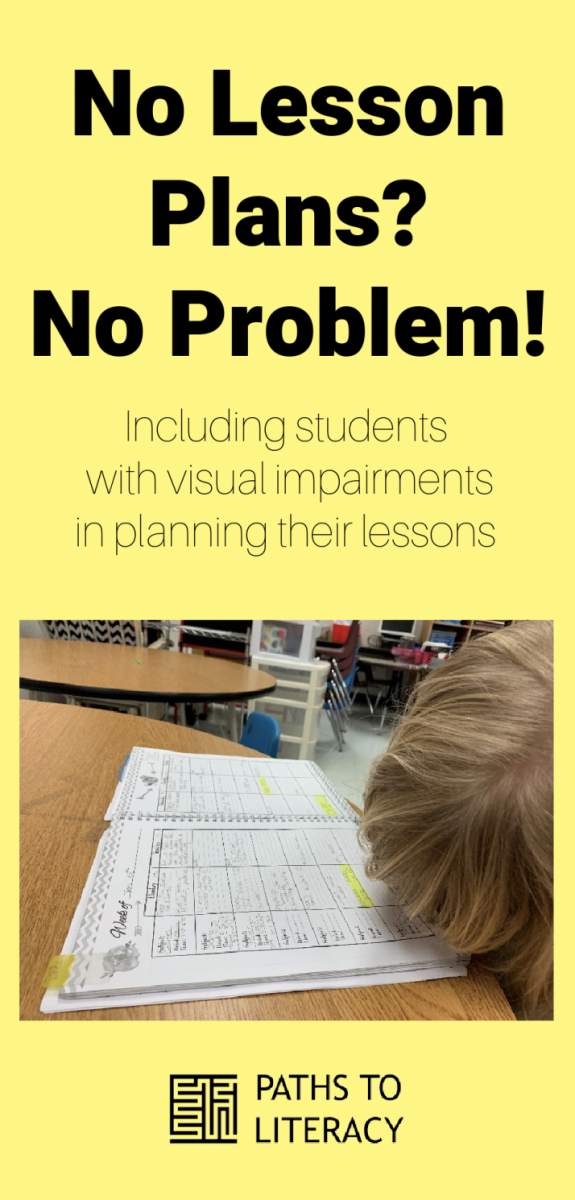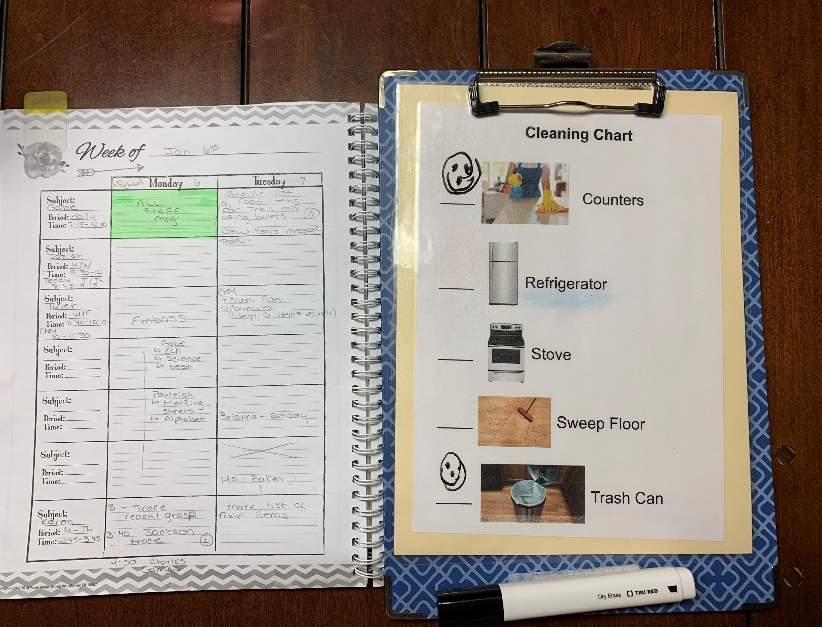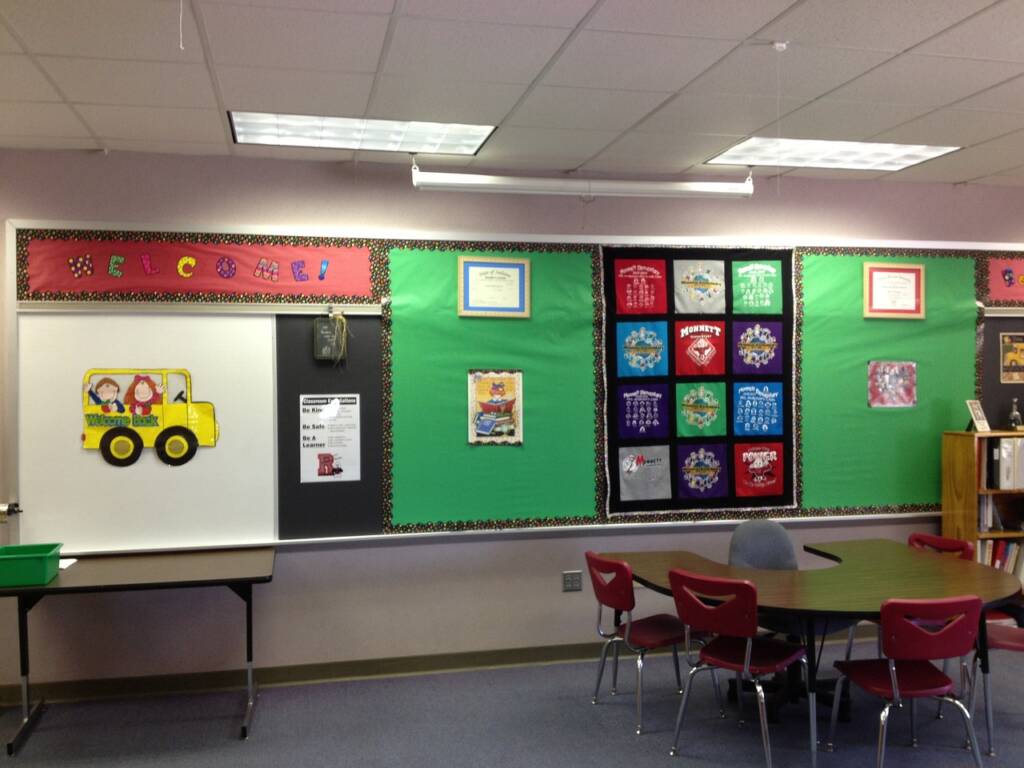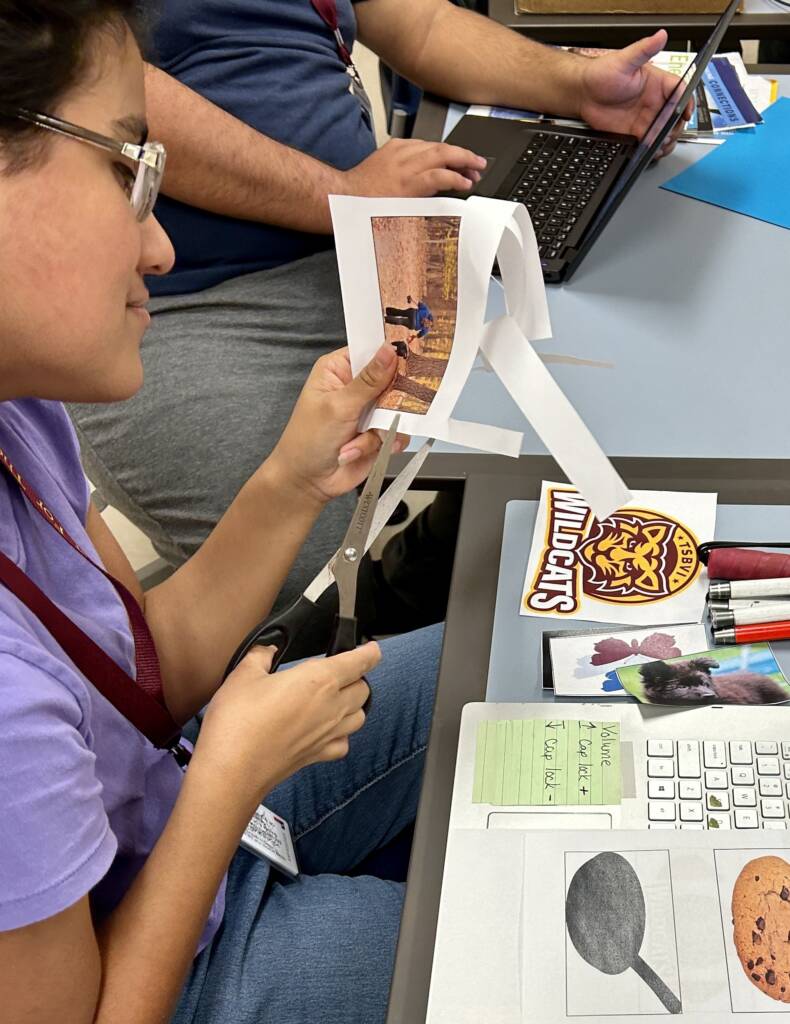A common requirement in education is the lesson plan. Frequently I hear colleagues across the nation comment that they don’t do them. This confuses and concerns me. I’ve been teaching nearly 30 years and I still do lesson plans. They have morphed over the years from structured to lax to structured once more. And by lax what I really mean is notes written down on a spiral or scrap piece of paper. Nothing formalized. Now I’m back to using a lesson plan book and modifying it to meet my own needs.
I become concerned with those that I hear are not using lesson plans. How do you keep track of lessons done, tests dates, progression of lessons, etc.? If an administrator or parent asks about a particular lesson, how do you answer? There’s just so much wrong here in my mind.
Why do we do lesson plans? As I stated previously, it is a typical requirement of teachers. It is a great systematic way to help guide lessons in regards to curriculum and/or IEP objectives. It is a way to document learning activities…a road map to learning the material. Finally, assessment…a way to help plan when to assess and what to assess.
I LOVE this image from The Amazing World of Teaching!
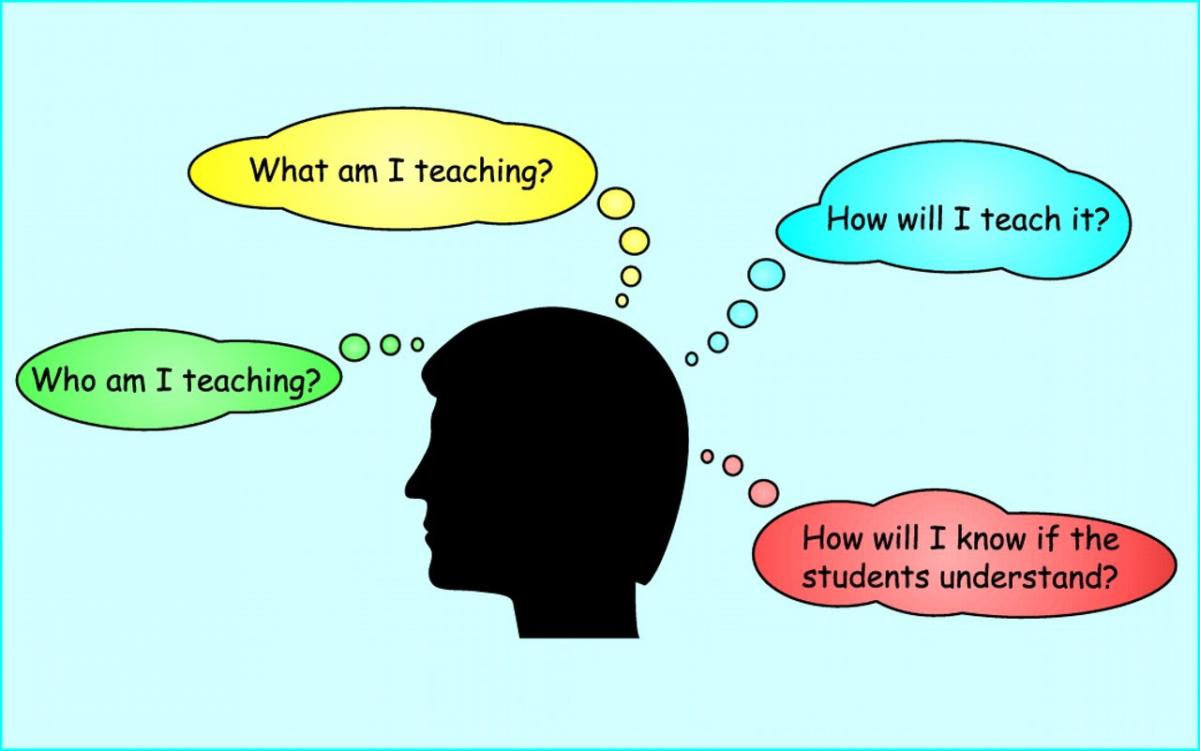
Lesson plans help answer those questions as well help formulate plans.
In Texas, we use the T-TESS as the teacher appraisal system. I looked through it and found that lesson plans were only mentioned once! Once and yet there is a priority that they are completed. Perhaps this is why teachers are becoming lax in writing them? But the 17-page rubric mentions lesson plans only ONCE! What? BUT it is alluded to 8 times by using the phrase “Learning Objectives”.
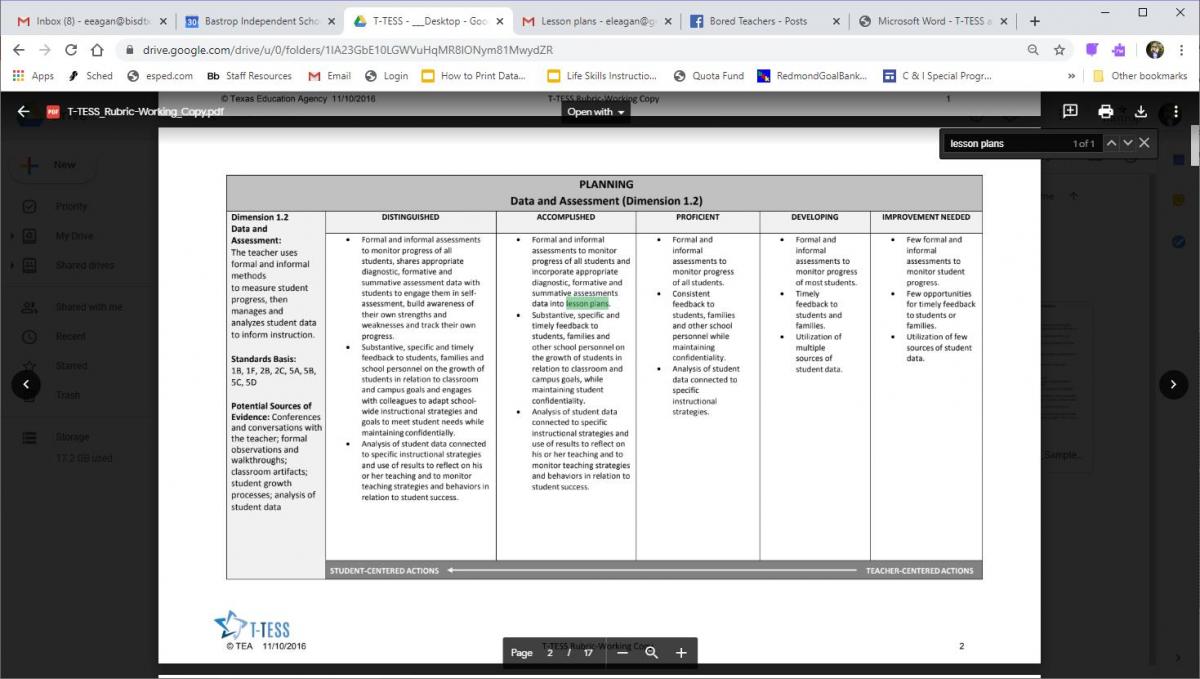
What should be in a lesson plan?
What should be in a lesson plan? Well, in a “typical” lesson plan for general education: the necessary materials for the lesson, clear and precise learning objectives, background knowledge that may be needed, direct instruction, student practice, a closure, and then some teachers are also asked to do a demonstration of learning (quick assessment). In special education settings, the lesson will be driven by IEP goals/objectives. The teacher might want to indicate which goal the lesson applies to. The teacher may also indicate if data taken during that lesson. Materials should also be listed…especially if you are moving from one room to another or one campus to another. This will help as a reminder of what is needed for that lesson. It’s my personal opinion that the lesson planning need to make sense to the teacher writing them.
I asked several previous administrators what their thoughts were on lesson plans and the SPED teacher which also includes the itinerant teacher. I did this as I’ve taught in a couple of states and several different school districts. I’ve never been asked to see my lesson plans, so I was curious what the administrators thought about them.
- Administrator 1: “I always expected all educators (classroom, itinerant, co-teachers) to have lesson plans. I never asked you for yours because you were ALWAYS WORKING with and for the students. Even when I was a principal in Puerto Rico, all teachers (including the ones that worked at the hospital) needed to have lesson plans.”
- Administrator 2: “I required all my staff working with students to have lesson plans (i.e. OT, PT, Speech, Music Therapist, Deaf Ed and VI itinerants) and would do a surprise check of them…no excuses”
- Administrator 3: “I don’t ask to see lesson plans, but I hope they’re being done. How can you teach someone something without writing down the steps you need to accomplish that skills/objective?”
- Administrator 4: “Having been involved in a court case about student services, the teacher had BETTER have lesson plans! They WILL be entered into record as evidence.”
- Administrator 5: “I used to tell you guys to have some type of lesson plan available in case someone asked, although I never expected anyone to have them. Principals expect them. Most teacher appraisal instruments (which are designed for classroom teachers not itinerants) include lesson plans in the scoring of the appraisal. I used to just write a sentence or two on my calendar about my plan for the kid when I was an itinerant.”
There are many different ways to do lesson plans. My recommendation is to find something that works for you. It needs to work for you and not be something that’s time consuming. If it’s time consuming, I have found people are less likely to continue using them.
The Madeline Hunter Model
This is the format I learned in college. This is the lesson plan format that is still commonly taught in college teacher training programs. These lesson plans are highly structured and are devised to use the classic, repetitive lesson model. They are designed for the explicit purpose of having students get it right the first time through the lesson. In my opinion, these are very detailed plans. They are also very time consuming to write. As an itinerant teacher or even a SPED teacher, these would be VERY time consuming in that one lesson plan would need to be written per student receiving services from us. You might be able to cover more than one student, but that could prove to be tricky.
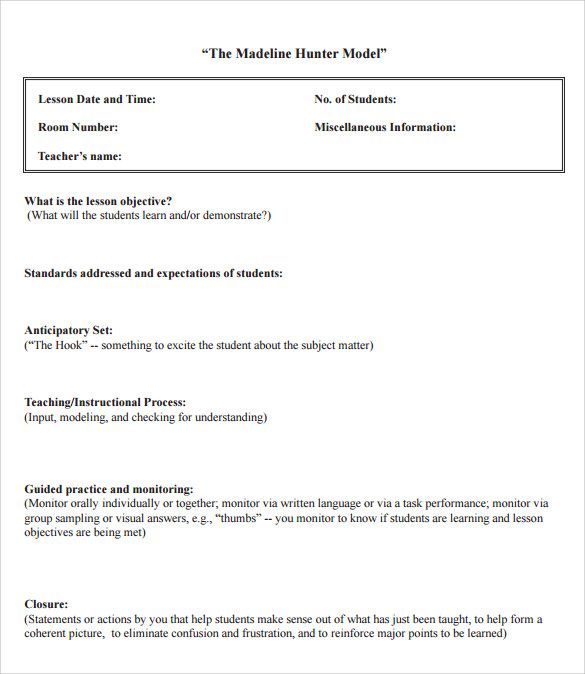
The Lesson Plan Table
This one was a new one to me. I found it as I was researching lesson plan formats. In this one, the lesson plan is lesson specific. It includes the student as a guide. Doesn’t set a time limit on the lesson so this could last several days. There is a nice section to list materials/other resources. Personally, I could see me using this when my student is leading a group lesson with their class or a class they’ve adopted. I feel this one is more SPED friendly, but for an itinerant….perhaps not so much.
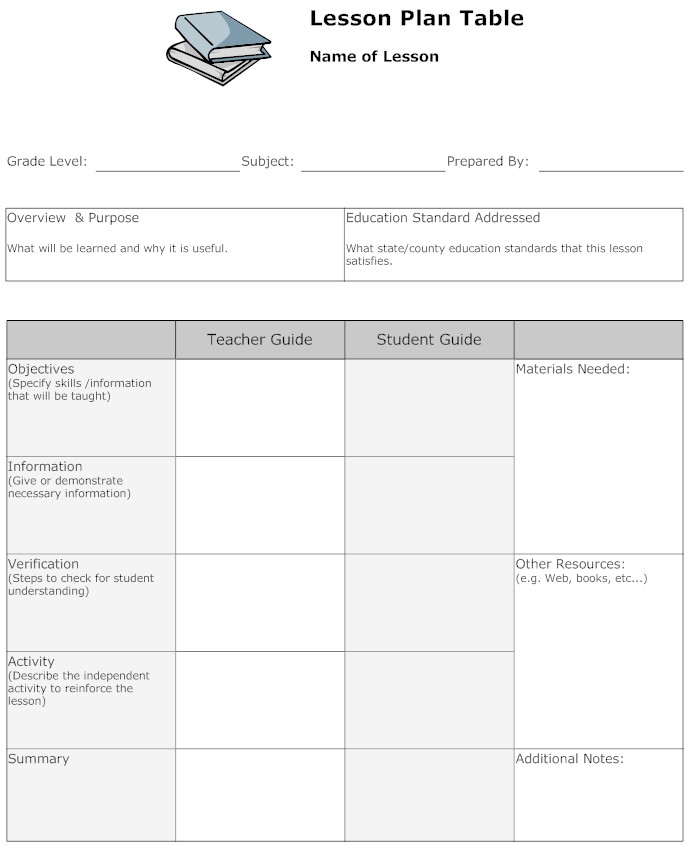
Daily Lesson Plan
I liken this to a “Reader’s Digest” version to Madeline Hunter’s lesson plan. Definitely simplifies it! I feel this one is also time consuming as one would need to be written per direct student.
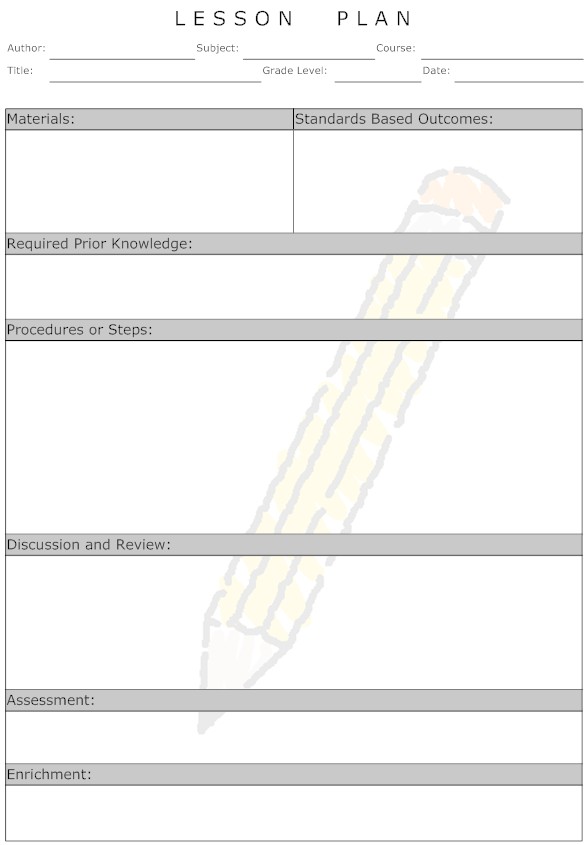
There are a ton of examples you can find online of lesson plan formatting. I didn’t see any that truly worked for me. So I did my own thing.
Some examples of previous plans of mine are not ones I would ever brag about. But, as an itinerant teacher, I had to find my own way.
Scraps of paper
I used to throw ideas down on scraps of paper/napkins, etc. and half the time I lost those notes or I didn’t have a clue what I meant when I went back to look at them. I didn’t always write a date and that was a problem. I used initials only as I didn’t want anyone to figure out who I was talking about should I misplace the papers. When digging through an old spiral, I found the lesson plan below. I spent several years of using this method.
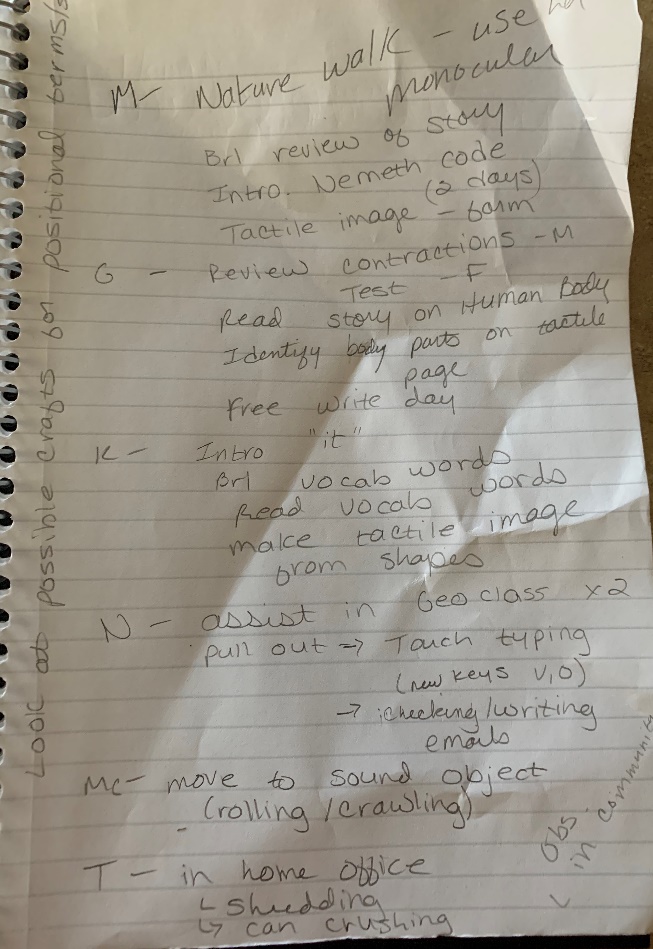
My ESY (extended school year) lesson plans are 2 pages. The first page is what the plan is for the day. The second page is the IEP objectives I was to work on with my groups. There were 3 students. 2 are in the gen ed receiving direct services from a VI teacher and the other is in life skills also receiving VI services.
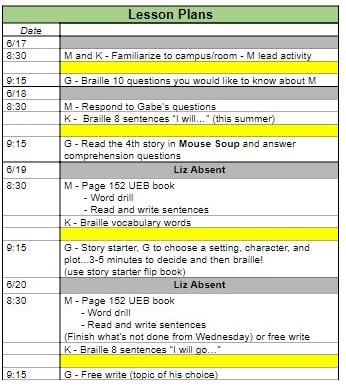
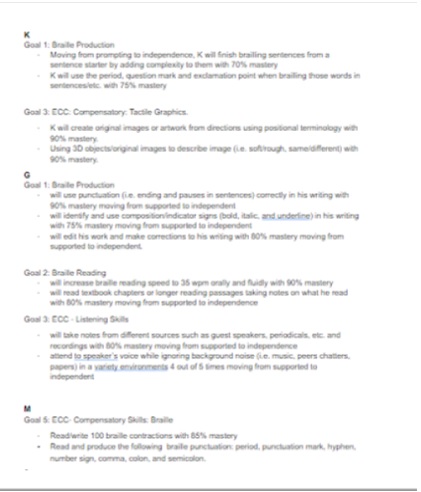
So I didn’t like what I was doing in regards to lesson planning. I needed to structure it better. Plus doing them was stressing me out. Time to make it more enjoyable! And I happened to see a lesson plan book at Staples. I bought it and took it home and was determined that this is what I’d be using from here on out!

Moving to the present
Now I use a lesson plan book. It helps me not only organize my weekly lesson plans/ARD meetings/Meetings, I also keep copies of student schedules, bell schedules, Monthly plans for the year, list of all the birthdays, student roster info and I have a grade book for record keeping. And it’s all in one handy dandy little book!
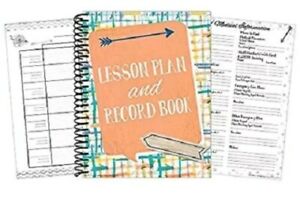
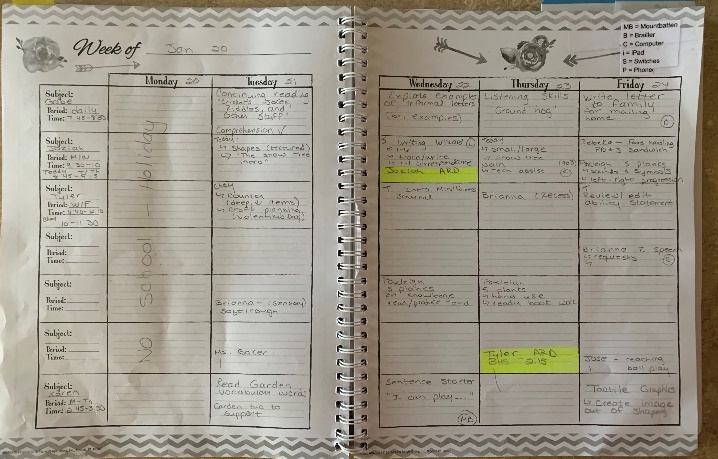
Using a lesson plan book
I purchased one just to see if it would work…and it did! It just needed to be modified to work for my needs. There’s nothing wrong with that at all! And it’s all in one handy dandy spot! The seating chart pages is where I taped the student’s schedules/school bell schedules. The Substitute Teacher page turned into IEP progress report due dates and the phone numbers for the nurses in my district. Plans for the year…Spot on! A gentle reminder of what needs to be done per month. Birthdays…a definite keep! I might tweak it to do annual ARDs/Evals as well…undecided here. Student Roster…KEEP! Perfect place to keep all your student’s info at the tip of your fingers. I edited the page for my needs. I added in mailing addresses, email addresses, phone numbers, student ID, etc. Lesson plan pages…AMAZING to have a week at one view! The gradebook: perfect place to store your data.
Help with the lesson planning
I have my students help write the lesson plans whenever possible. For examples, if the student is learning braille, they get to determine what days to focus on reading, braille production, and tactile graphics. Lessons are then built each week based on those preferences. Here are a few examples:
Student 1:
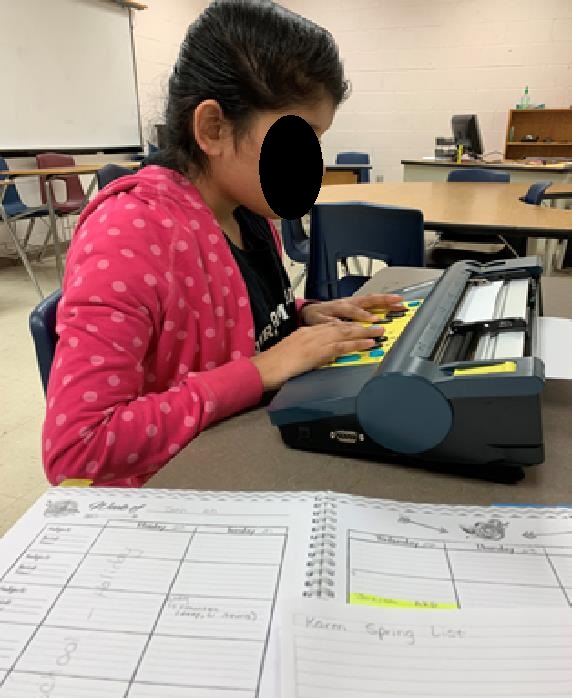
This student is in the 7th grade in a life skills setting. She is brailling a one word list of what she wants to do the spring semester. I write a list of her wishes with more details based on our conversations. As she’s in life skills, we take it one month/holiday at a time.
She also has to state whether she wants the activities to be one on one with me or with her class.
She has 35 vocabulary words at this time. New words are sounded out at this time per speech teacher. I keep a written copy of what I know she’s trying to say
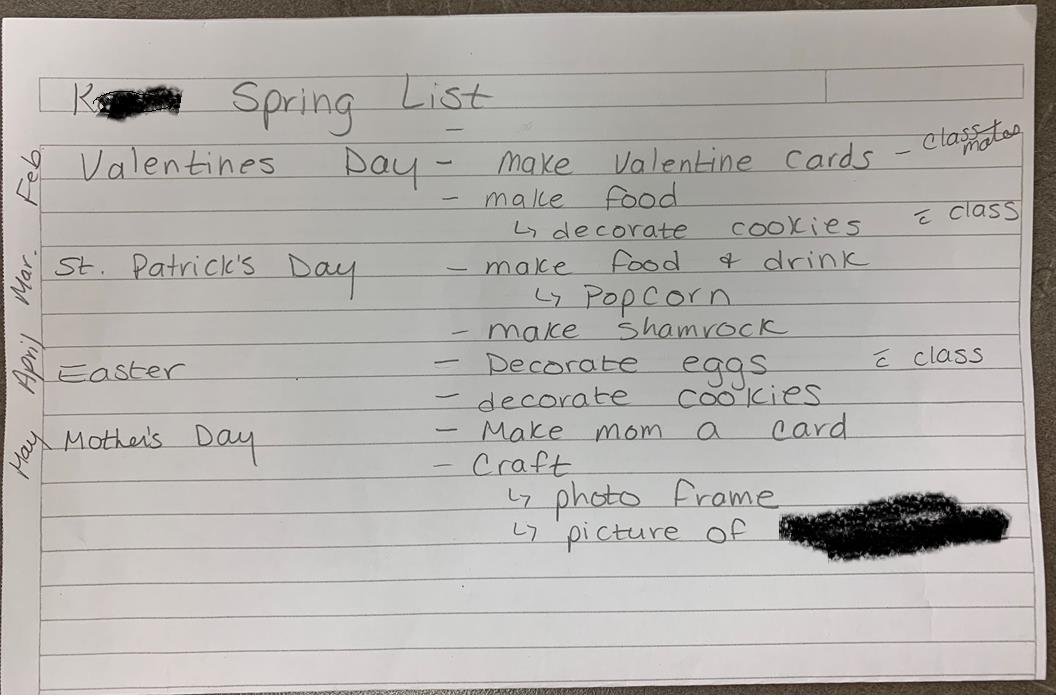
Student 2
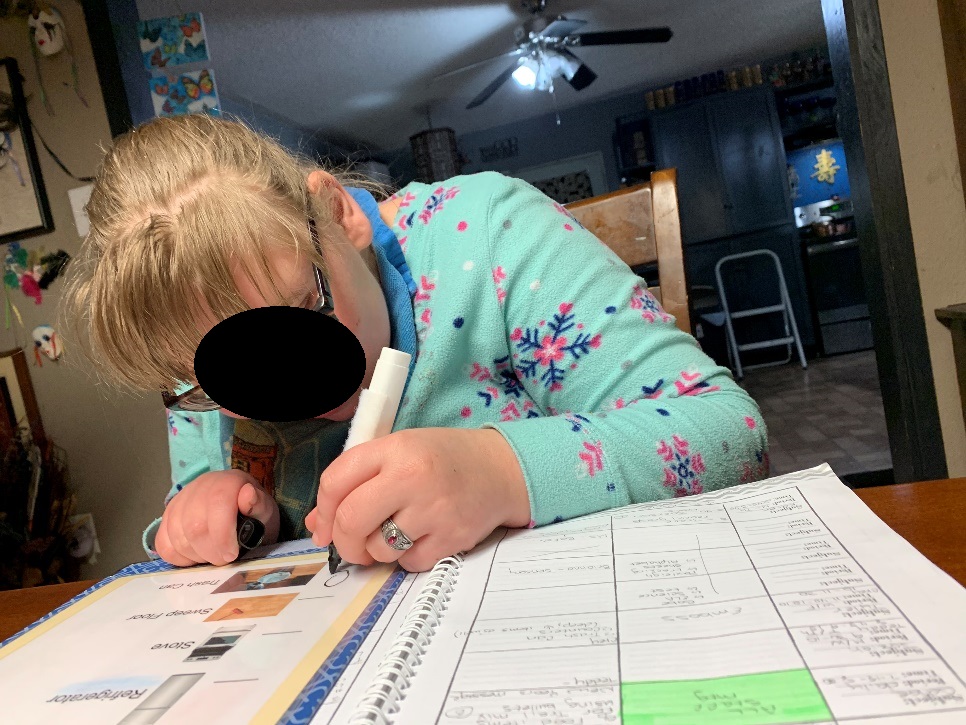
This student is choosing from her list of chores what she wants to work on the following week.
The next week, she will choose a recipe and an appliance she wishes to use (i.e. stove, oven, slow cooker, microwave, or air fryer).
Her lessons are done at home. She’s in our 18+ program. My vision services are done at home with the family present.
As you can see, my plans are not hidden. She can see what she worked on previously.
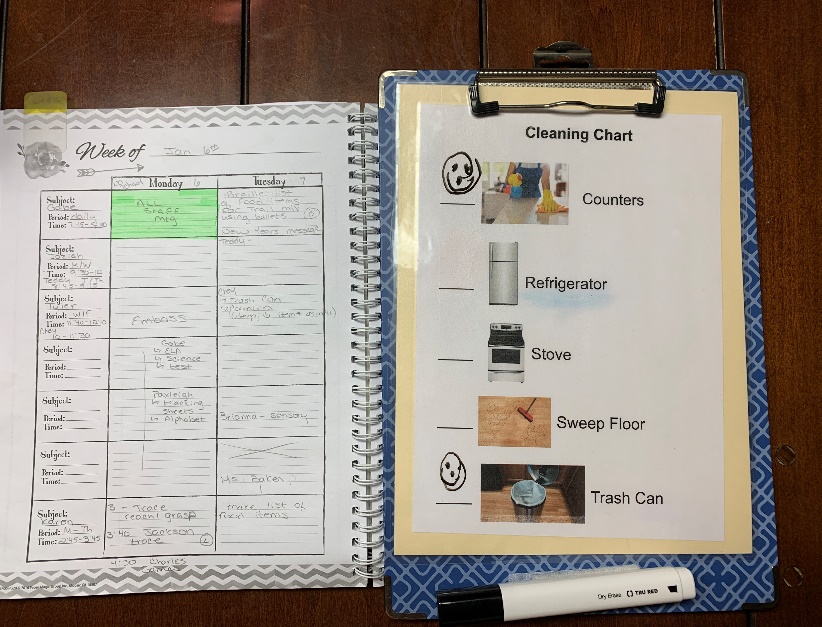
Here is an image of her chore plans beside my lesson plan book. This is her way to double check my work.
She can verify that I wrote what she wants.
She is aware that I can trump her wishes by trying something new, doing a test, or the family has requested something different than what was planned.
Student 3
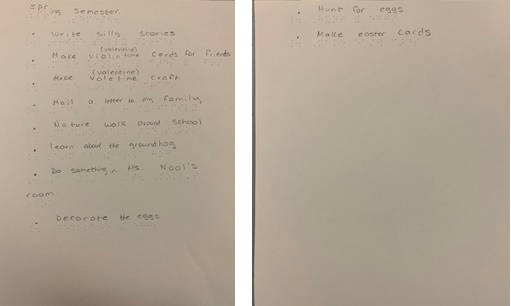
This student is in the 5th grade and is pretty vocal on what he wants. We’ve turned Fridays into silly writing day.
His ‘hunt for eggs’ bullet is where he plans to lead an Easter Egg Hunt with a life skills class.
He has adopted the class. Here he must communicate with a teacher is doesn’t know well. This is a perfect opportunity to invite the Speech Therapist to join in the planning and the actual day of the communication. The eggs will contain things that relate to IEP objectives of the different life skills students to make the activity more age appropriate. Each student will have their own specific egg color to search for.
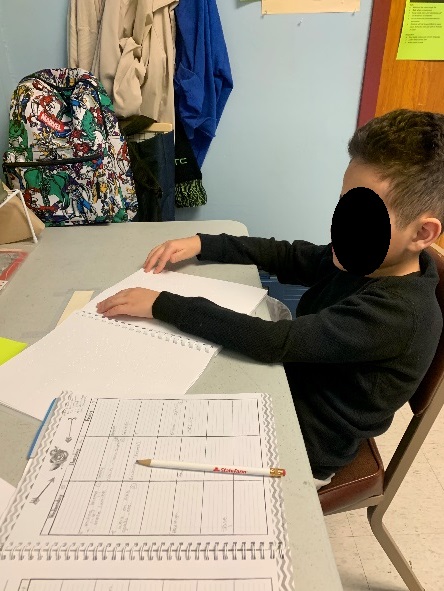
Here the student is reading over his IEP goals that he is working on.
Next he will tell me based on his list he made, goals we need to work on, and his own feelings at that particular moment what we should be working on the next week.
He is aware that Ms. Liz is a dictator at times and will override his wishes if testing, etc. needs to take priority over his plans He has also learned that “life happens”.
He knows there could be a fire drill during the lesson, weather might cause a school closure, he or I could be absent, etc. He has also been helping with lesson planning for the last 2 years.
Student 4
This student is in kindergarten. She currently doesn’t have a lot of say in the lesson plan process as we are using the Patterns Curriculum and I follow that pretty religiously. I do look at the holidays we have coming up and will stray from the curriculum for a one day activity.
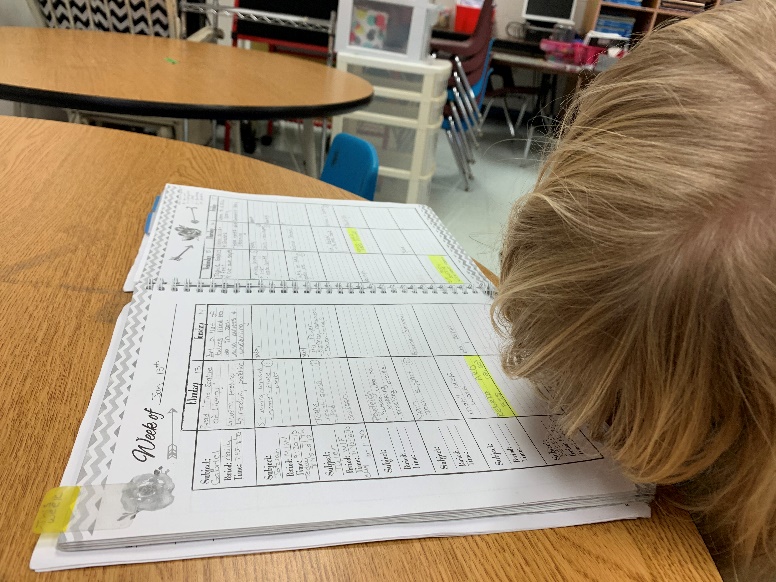
This student was new to me this year. Braille instruction started in of January. She is a beginning braille student.
She wanted to verify what I said we were doing was actually what I had written. I’m still working on gaining her trust. We are discussing if I should put my lesson plans on the computer and have them read to her or as a recording on my phone.
Why include the student?
I already include them in writing their IEP objectives and helping with their progress notes so the lesson planning is a natural step in this progression. I have found that there is more of a ‘buy in’ to the activities and lessons if the student feels they have a say in the activities and as a result they are more engaged in the activities. I have also learned that my students have GREAT ideas! Ideas I wouldn’t have thought of!
By including them in the lesson planning, we are working on the ECC…Self Determination, for example. They can start/refine their skills with me. There’s no judgement only support. This is a safe environment for them to practice advocating for themselves. The student feels like they’re “heard”. The student is able to analyze what works and what doesn’t…a lifelong skill! This also gives me more insight into their needs and interests. Without realizing it, the student is learning steps to plan out their own lives be it projects or daily life.
Pandemic 2020
Unfortunately lesson planning became more difficult during the recent quarantine due to Covid19. That being said, I relied on what the classroom teachers were doing. I used the IEP objectives that I am working on to help guide me in planning lessons. I look at the materials being used and then I asked myself:
- What part(s) of this lesson can I support?
- Do I need to adapt or modify part of this lesson?
- Are materials needed for the concepts in this lesson? Do I need to create them for the student to be successful?
- Is it possible to join the classroom teacher in this lesson or should I do this lesson one on one with my student?
Were all my goals worked on during the quarantine? No, but I was able to work on them. For example, my students learning braille, we worked on assigned materials. The goals I had could be used on these lessons.
Families contacted me frequently asking for materials, ideas, etc. to help their child. This went beyond my typical enlarging or embossing the materials from school or the lessons I sent home based on the activities we were working on prior to the start of the quarantine.
So where did I get the materials that I created/adapted to be mailed home or porch dropped?
- Reading: CommonLit (https://www.commonlit.org/en/library) has great stories with comprehension questions. There is no cost for this resource. Once a member, there are the occasional email for updated info
- Social Stories, life skills activities, etc.: AdaptEd 4 Special Ed (https://shop.adapted4specialed.com/) Several resources on here are also free
- Social Stories, activities, lesson plans: Teachers Pay Teachers (https://www.teacherspayteachers.com/) These resources come at a cost.
- Crafts, activities, ideas, etc.: Pinterest (https://www.pinterest.com/) Free to look through, but can become addictive!
- Recipes: Accessible Chef (https://accessiblechef.com/) Free recipes
- Active Learning Space: https://activelearningspace.org/
- Active Learning: Active Learning Home Hacks
- Math, Science, Reading, etc: Paths to Literacy https://www.pathstoliteracy.org/
- Virtual ExCel Academy Webinars: https://www.youtube.com/playlist?list=PLUj6DcM1nN3EGnleJhGT296nMNJj9IwmB
- Playing with Words microsite: https://www.pathstoliteracy.org/playing-words/site-map
- Paths to Technology: https://www.perkinselearning.org/technology
This is just a small sampling of where I looked for ideas to help the families of my students. I applauded the families for the open dialogue between us. I enjoyed them asking for help, sharing videos of the student working, or what items they had in their home. I revisited the ECC evaluation I had completed previously and this opened yet another dialogue. I have a supply of materials in my garage so I could make some things at home to do a porch drop later. I could then take a video demonstrating how to use the materials to send home to the families.
In Conclusion
Lesson plans help keep the focus on the objectives you are working on, skills you’re wanting to teach in a systematic format, and a great way to document your time. If you’re ever called into a dispute, your lesson plans could be asked for. Find a method that works for you and use it. It’s okay to adapt what format is currently available or create your own format. My lesson plans get ideas not only from the students, but their parents, other service providers and/or their classroom teachers. My students have started to be more active in the lessons since they are providing input into them. If the classroom teacher/therapist is starting a new unit or is about to do a project, I can pre-teach the skills needed. You just need to connect with that teacher/therapist. Have fun with the lesson planning!
Resources
- The Amazing World of Teaching
https://sites.google.com/site/theamazingworldofteaching/topics-of-del-ii/lesson-planning - Madeline Hunter Lesson Plan Model
https://thesecondprinciple.com/essential-teaching-skills/models-of-teaching/madeline-hunter-lesson-plan-model/ - T-TESS Rubric
https://www.teachfortexas.org/Resource_Files/Guides/T-TESS_Rubric.pdf
